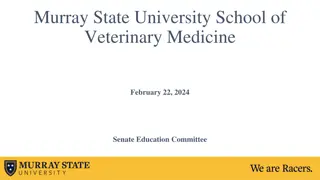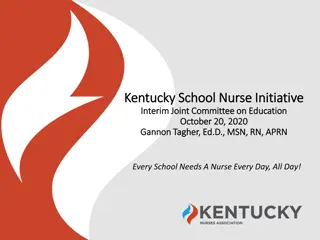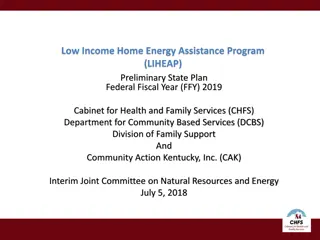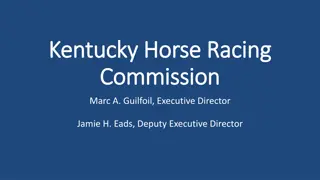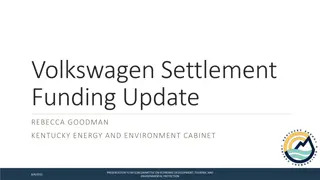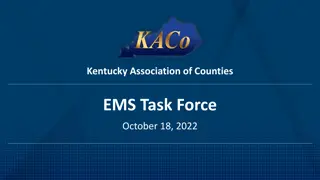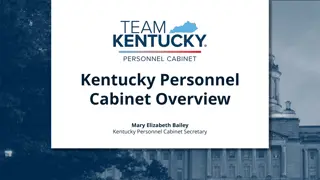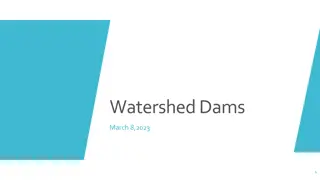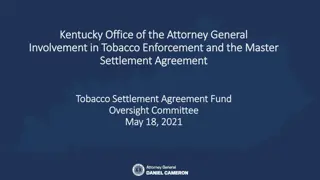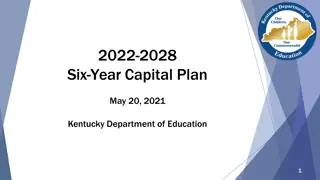Addressing Underserved Students in Kentucky: Efforts and Goals
Kentucky's initiatives over the last 40 years have focused on promoting diversity, equity, and inclusion in higher education, especially for African American students. The state aims to have 60% of the population holding a postsecondary credential by 2030. Evaluation criteria include progress in enrollment, retention, graduation rates, and workforce diversity, both quantitatively and qualitatively.
Download Presentation

Please find below an Image/Link to download the presentation.
The content on the website is provided AS IS for your information and personal use only. It may not be sold, licensed, or shared on other websites without obtaining consent from the author.If you encounter any issues during the download, it is possible that the publisher has removed the file from their server.
You are allowed to download the files provided on this website for personal or commercial use, subject to the condition that they are used lawfully. All files are the property of their respective owners.
The content on the website is provided AS IS for your information and personal use only. It may not be sold, licensed, or shared on other websites without obtaining consent from the author.
E N D
Presentation Transcript
CPEs Efforts Addressing Underserved Students A Report to the Interim Joint Committee on Education Travis Powell, JD - Senior Vice President and General Counsel Dr. Dawn Offutt - Executive Director for Access, Engagement, & Belonging July 16, 2024
Kentuckys efforts over the last 40 years 1982, KY Higher Ed Desegregation Plan; Creation of the Committee on Equal Opportunities 2010, Creation of broader definition in new diversity plan 2023, Planning for next iteration of DEI policy Majority of focus on boosting enrollment and success of African American students; also recruiting more African American faculty and leadership. 1982 1983 1984 1985 1986 1987 1988 1989 1990 1991 1992 1993 1994 1995 1996 1997 1998 1999 2000 2001 2002 2003 2004 2005 2006 2007 2008 2009 2010 2011 2012 2013 2014 2015 2016 2017 2018 2019 2020 2021 2022 2023 2016, DEI policy integrated into statewide strategic agenda, academic approval process 1992, SB398 ties new academic program approval to EEO goals 1982, Creation of Committee on Equal Opportunities 2008, Released from Desegration Plan 2 Kentucky Council on Postsecondary Education
Kentuckys goal is to have 60% of the population with a postsecondary credential by 2030 The state s goal was set in 2016. According to our estimates, we still have more work to do to reach the goal within six years. Source: CPE Data, Research and Advanced Analytics Unit. 3 Kentucky Council on Postsecondary Education
The concepts: diversity, equity and inclusion Diversity: People with varied human characteristics, ideas, world views, and backgrounds. Diversity, in concept, expects the creation of a safe, supportive, and nurturing environment that honors and respects those differences. Equity: Opportunities for historically underrepresented populations to have equal access to and participate in educational programs. Inclusion: Increasing understanding and empathy of the complex ways we as diverse individuals may interact within systems and institutions. This is achieved in curriculum, in the co-curriculum, and in communities (intellectual, social, cultural, geographic) with which individuals might connect. 4 Kentucky Council on Postsecondary Education
How we evaluate reports The plan has three areas for improvement: Opportunity, Success and Impact. Quantitative: Progress toward set targets for URM and low-income students. Undergraduate and graduate enrollment First-to-second-year retention rates Graduation rates Degrees conferred/credentials awarded Workforce diversity (for faculty, staff) Qualitative: Progress implementing institutional strategies. Implementation with fidelity Analysis of effectiveness Lessons learned and next steps 5 Kentucky Council on Postsecondary Education
Examples of what campuses are doing and the results learn more by reading our latest report Targeted outreach. Minimizing financial barriers. Building pathways from K-12 to college. Minimizing non-academic barriers to success. Integrated first-year experience. Proactive advising and early intervention. Cultural competency professional development. Culturally competent hiring policies and procedures. 6 Kentucky Council on Postsecondary Education
Through our efforts, we are seeing improvement close to or above the statewide rate In some cases, the progress rate of our target student groups exceeds overall progress for the sector. Retention Rates Graduation Rates 2015-16 Most Recent Improvement 2015-16 Most Recent Improvement KCTCS Overall 52.6% 60.8% 8.2 pp KCTCS Overall 26.8% 44.2% 17.4 pp KCTCS URM 45.1% 53.9% 8.8 pp KCTCS URM 16.5% 31.8% 15.3 pp KCTCS Low-Income 50.5% 58.4% 7.9 pp KCTCS Low-Income 23.4% 41.4% 18 pp 4-yr. Public Overall 76.3% 80.7% 4.4 pp 4-yr. Public Overall 50.6% 59.9% 9.3 pp 4-yr. Public URM 71.0% 75.7% 4.7 pp 4-yr. Public URM 38.8% 45.9% 7.1 pp 4-yr. Public Low-Income 69.2% 74.7% 5.5 pp 4-yr. Public Low-Income 38.8% 46.6% 7.8 pp Sources: 2022 and 2024 Progress Reports. CPE Data, Research and Advanced Analytics Unit. 7 Kentucky Council on Postsecondary Education
CPE initiatives to assist the work of our campuses Academic Leadership Development Institute (ALDI): Year-long professional development focused on early career, faculty and staff from diverse backgrounds who aspire to leadership positions. Cultural Competency Credential Certification: A statewide certification process that recognizes institutions for their work in cultural competence. Higher EDquity Symposium: An annual event to discuss best practices for ensuring the success of underserved students. Examples: Caption It: How to Add Captions to Multiple Platforms and Why You Should Knitting a Stronger Safety Net for First Year Students Designing Inclusive Communities: How Accessibility Leads to Belonging 8 Kentucky Council on Postsecondary Education
The goal of our work: Moving students and their families into pathways of prosperity Lifetime Earnings Other benefits: High School Diploma Access to better healthcare, exercise and enjoy better health. $1.5M Some College or Certificate $1.69M More likely to be civically engaged. Associate Degree $1.88M More likely to read to their children and be more supportive of their education overall. Bachelor's Degree $2.47M Masters Degree More likely to find jobs and stay employed, even in a down economy. $2.43M Doctorate or Professional Degree $3.61M 9 Kentucky Council on Postsecondary Education
Kentuckys efforts moving forward Updating the statewide policy. Adjusting elements of the performance funding model. Shifting CPE s work in this area to the P20 unit to better understand student needs. 10 Kentucky Council on Postsecondary Education


